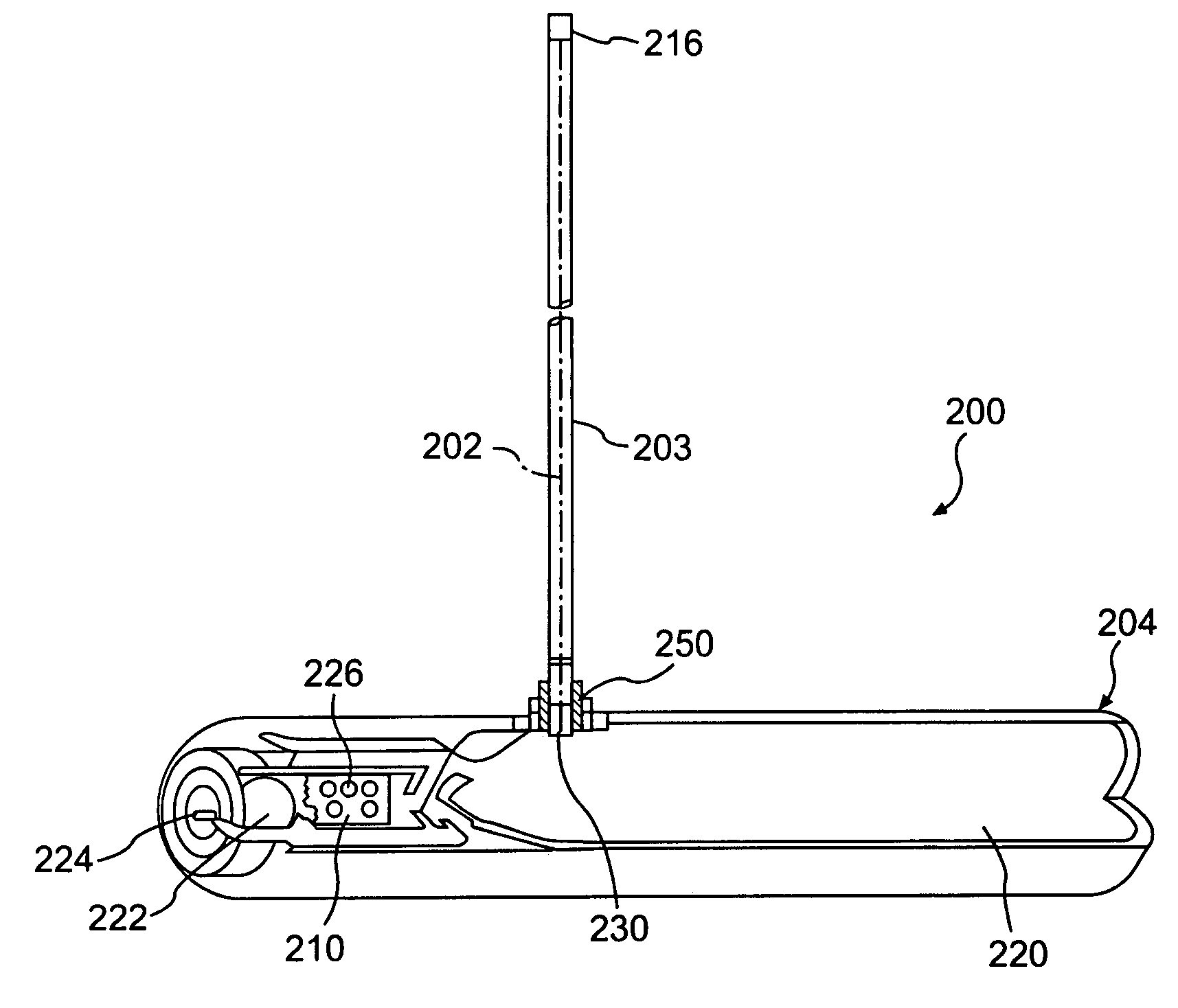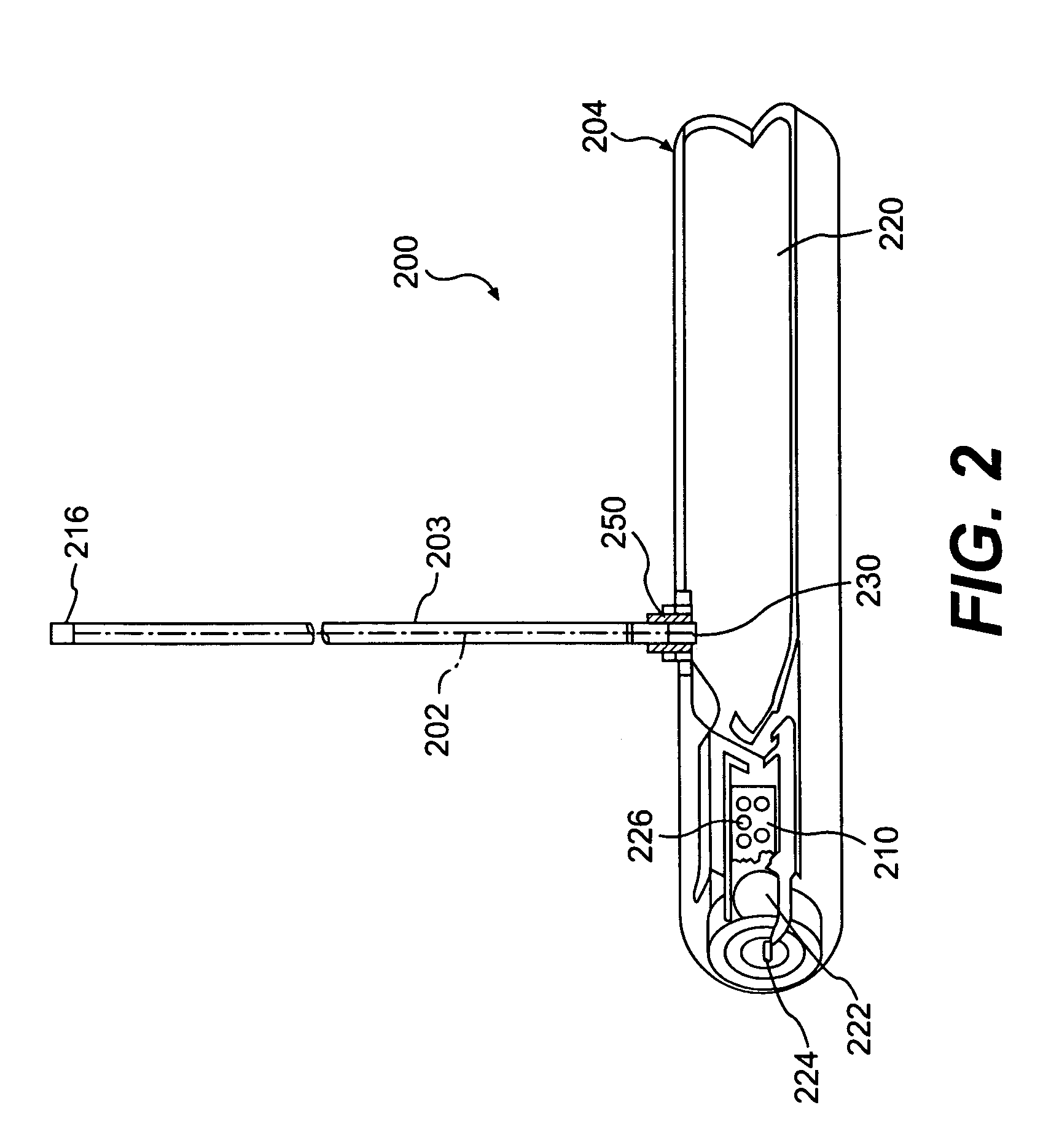Distributed charge inflator system
- Summary
- Abstract
- Description
- Claims
- Application Information
AI Technical Summary
Benefits of technology
Problems solved by technology
Method used
Image
Examples
Embodiment Construction
[0024]Reference will now be made in detail to the preferred embodiments of the present invention, examples of which are illustrated in the accompanying drawings.
[0025]FIG. 2 shows an inflator according to a preferred embodiment of the present invention.
[0026]As shown, inflator 200 includes a distributed charge 202 and a housing 204. Distributed charge 202 is designed to be installed within and distributed along the interior of the undeployed inflatable component of an inflatable system. Housing 204 includes a combustion chamber 210 and a gas storage chamber 220. Combustion chamber 210 includes an initiator 222, connector pins 224 and a gas propellant 226. Initiator 222 may be an electronic squib, such as the electronic squib used to initiate deployment of an automotive airbag. Connector pins 224 are used to electrically connect inflator 200 to a crash sensor or other activator. Gas propellant 226 may be pyrotechnic materials, such as boron potassium nitrate (BKNO3). Gas storage cham...
PUM
 Login to View More
Login to View More Abstract
Description
Claims
Application Information
 Login to View More
Login to View More - R&D
- Intellectual Property
- Life Sciences
- Materials
- Tech Scout
- Unparalleled Data Quality
- Higher Quality Content
- 60% Fewer Hallucinations
Browse by: Latest US Patents, China's latest patents, Technical Efficacy Thesaurus, Application Domain, Technology Topic, Popular Technical Reports.
© 2025 PatSnap. All rights reserved.Legal|Privacy policy|Modern Slavery Act Transparency Statement|Sitemap|About US| Contact US: help@patsnap.com



